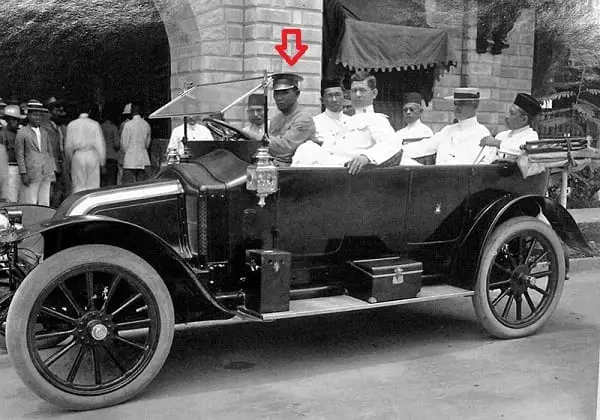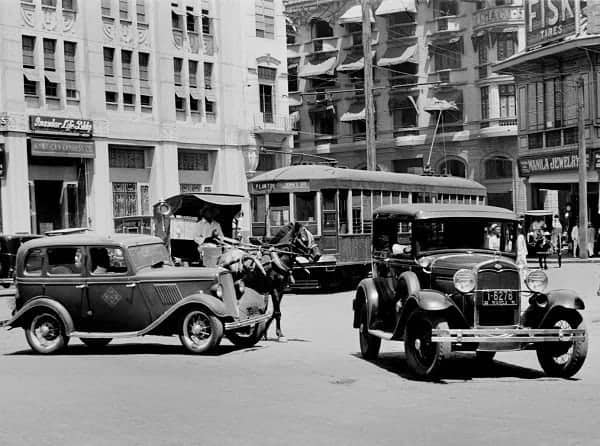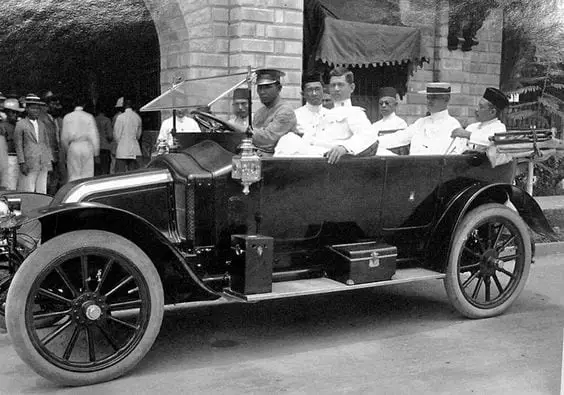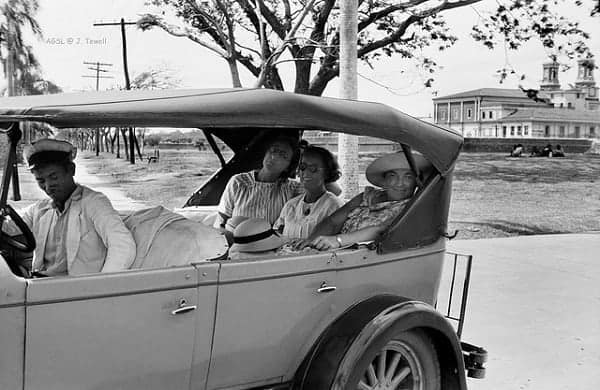Filipinos Used To Drive “Right-Hand-Drive” Cars

One interesting detail caught my eye as I browsed through black-and-white photographs of pre-war Manila.
Sitting in the front seat of what appeared to be an early model of Ford automobile is a man. At first look, you’d think it’s just another photo from a bygone era. A closer inspection, however, reveals why it looks a bit strange: the driver’s seat of that car is on the right side.
Also Read: Rare Color Photos of the Philippines in the 1940s
In the early 20th century, when automobiles were first introduced to the world, no strict rules existed that required anyone to choose either right- or left-side driving.
Cars were few and far between, and a lot of roads were unpaved. Hence, choosing which side to drive was just a matter of custom.

When the technology reached the Philippines, we didn’t start as a left-hand-drive country right off the bat. In fact, we were the exact opposite.
Early automobiles in the country, as seen in various peacetime photographs, initially adopted left-side driving, which means you drive your car to the left side of the road while the driver (or the steering wheel) is on the opposite side of the vehicle.

WWII changed everything–and that included the way how we drive cars.
The Americans who took part in the war also brought with them motor vehicles that were different from what Filipinos used to drive.
These vehicles, which would later become part of war surplus that gave birth to Philippine jeepneys, had its driver’s seat on the left side (for right-side driving). It is said that the Americans first adopted this system after Henry Ford designed and released his Model T.

Apparently, the American vehicles were in conflict with the system that was in place in the Philippines at that time. To facilitate the movement of the American troops, uniformity had to be established.
Joseph H. Rauh, Jr. was a first lieutenant who joined General Douglas MacArthur’s army in the Philippines. In an interview with Studs Terkel for the latter’s book “The Good War: An Oral History of World War II,” Rauh recalled the difficulty of changing the status quo (i.e. reorienting people in the Philippines to start driving on the right side of the road). He said:
“I… was on General MacArthur’s staff… I was sort of mayor of Manila… You have no idea of the problems you face. One night we get an order. From now on, everybody will drive on the right side. The Philippines is one of those places where it’s on the left. Try that sometime, brother, to figure out in three days how you’re gonna move people from the left side to the right. Tell that Filipino guy with his carabao to go on the other side of the road. {Laughs)”
Also Read: 10 Facts About World War II That Never Made It To Your Philippine History Books
A permanent change was finally implemented when President Sergio Osmeña signed Executive Order No. 34 on March 10, 1945.
The said EO justified the changes made by citing two reasons. It said that the system “would reduce the price of motor vehicles imported into the Philippines from the United States.” The other reason, of course, was to accommodate the motor vehicles of the United States Army that were already plying Manila roads. (You can view the original copy of the EO here).
And that, my friend, is how we became a left-hand-drive country, joining 75% of countries around the world today with the same way of driving.
References
Joseph L. Rauh, Jr.. American National Biography Online. Retrieved 5 July 2016, from http://goo.gl/1DawO1
Manila Reborn. Google Arts & Culture. Retrieved 5 July 2016, from https://goo.gl/yXO1yw
Stone, D. (2013). The Right (and Left) Stuff: Why Countries Drive on Different Sides of the Road.National Geographic. Retrieved 5 July 2016, from http://goo.gl/qVE7A2
Terkel, S. (2013). The Good War: An Oral History of World War II. The New Press.
Written by FilipiKnow
FilipiKnow
FilipiKnow strives to ensure each article published on this website is as accurate and reliable as possible. We invite you, our reader, to take part in our mission to provide free, high-quality information for every Juan. If you think this article needs improvement, or if you have suggestions on how we can better achieve our goals, let us know by sending a message to admin at filipiknow dot net
Copyright Notice
All materials contained on this site are protected by the Republic of the Philippines copyright law and may not be reproduced, distributed, transmitted, displayed, published, or broadcast without the prior written permission of filipiknow.net or in the case of third party materials, the owner of that content. You may not alter or remove any trademark, copyright, or other notice from copies of the content. Be warned that we have already reported and helped terminate several websites and YouTube channels for blatantly stealing our content. If you wish to use filipiknow.net content for commercial purposes, such as for content syndication, etc., please contact us at legal(at)filipiknow(dot)net
